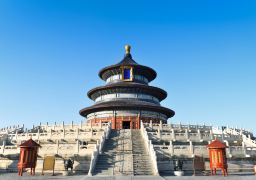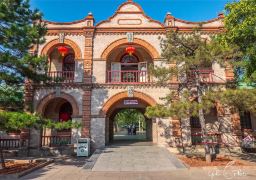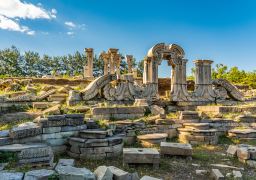Ba Lin Temple
Ba Lin Temple is located at No. 1 Xi Lou Hutong, Yonghegong Street, Dongcheng District, Beijing. It has been renovated and expanded during both the Ming and Qing dynasties. Emperor Kangxi of the Qing dynasty once inscribed ‘Everlasting Ba Lin’. The temple is named ‘Ba Lin Temple’ due to the abundance of ancient cypresses. It preserves the ‘Longzang’ scriptures, which is the only existing woodblock version of Buddhist scriptures in China. The temple is home to many ancient trees, especially ancient cypresses and locust trees, as well as white-barked pines and ancient ginkgoes.
Facing south, all buildings are constructed on tall brick and stone foundations, giving an impression of grandeur and splendor. The main structures of the temple are aligned along a north-south axis. Starting from the south, there are the Mountain Gate, Hall of the Heavenly Kings, Yuanju Xingjue Hall, Mahavira Hall, and Vimala Hall, with side halls on both the east and west sides.
Mountain Gate Hall
The Mountain Gate Hall is three bays wide. It has an arched lintel inscribed with ‘Imperially Built Ba Lin Temple’, and a beautifully carved brick screen wall in front of the gate.
Mahavira Hall
The Mahavira Hall, the main hall of the temple, is five bays wide with a single eave and a hip roof. There is a large horizontal plaque hanging in the center under the eaves, inscribed with ‘Everlasting Ba Lin’ by Emperor Kangxi himself. Inside, there are statues of the Three Buddhas of the Ming Dynasty and seven painted wooden Buddha statues, with vivid shapes.
Vimala Hall
The Vimala Hall, also known as the Sutra Pavilion, has two floors, each five bays wide, with side buildings on the east and west sides.
Currently, Ba Lin Temple is occupied by the Central Cultural Management Cadre College Training and Research Center. Visitors can only visit the exterior. Opening hours are all year round, open all day, but currently not open to the public, and the interior cannot be entered. The specific operating status is subject to the actual opening conditions on the day.



